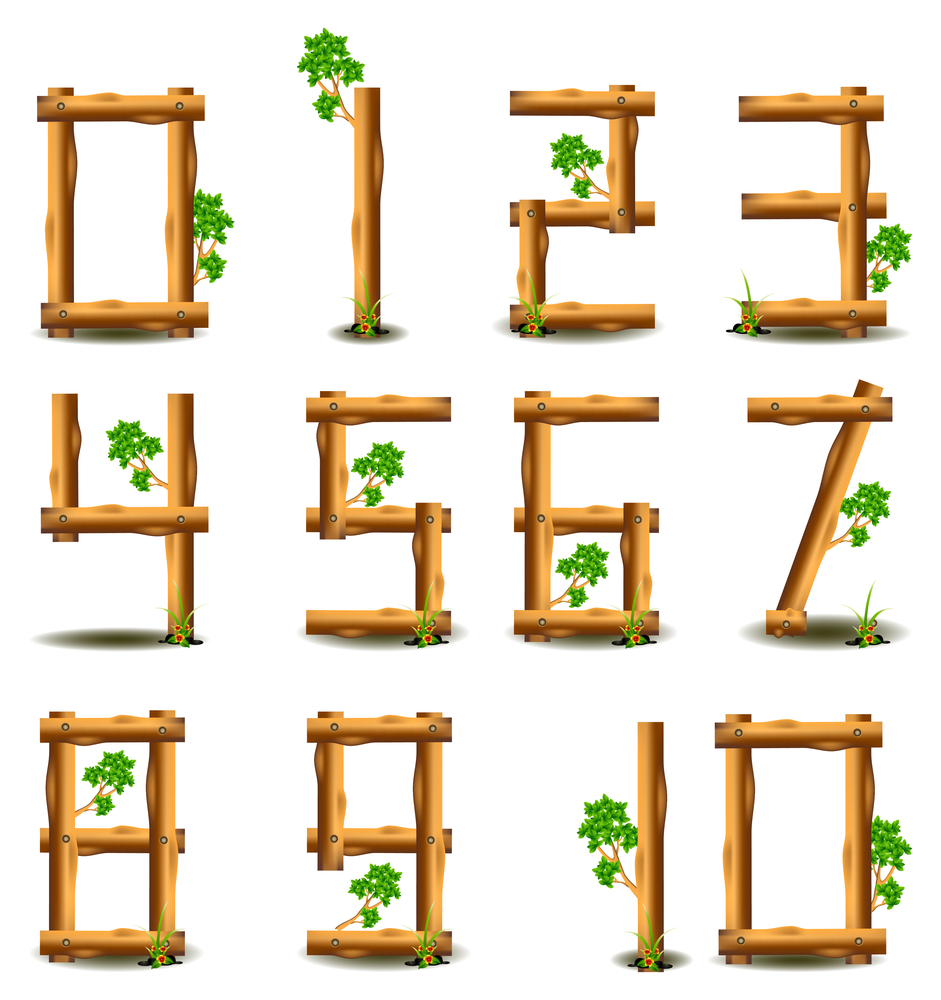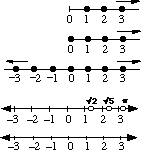 Sets
Sets
Although set theory and operations are not now included in this course it is useful to know what a set is, and about the various number sets.
Notation
A set is a collection of objects. These objects, called the members or elements of the set, are enclosed in braces {...} and separated by commas. A set can be described in words: A = { the first three natural numbers}
or by listing each member: A = {1, 2, 3}
Number sets
The numbers we use can be chosen from several sets.
Types of Numbers
The multiples of a natural number are formed by multiplying the number by 1, 2, 3, ...
e.g. Multiples of 11 are 11, 22, 33, 44, ...
The lowest common multiple of numbers is the lowest multiple that is shared by the numbers.
e.g. The lowest common multiple (LCM) of 4 and 6 is 12..
The factors of a natural number are the numbers that divide into it without any remainder.
e.g. Factors of 8 = {1, 2, 4, 8}
The highest common factor (HCF) of numbers is the highest factor shared by the numbers.
e.g. Highest common factor of 8 and 12 is 4.
There are some useful "tricks" to help you decide whether a number is a factor of another number. This is called divisibility.
Click the numbers below to find out what they are.
Natural numbers can be written as the product of prime numbers.
e.g. 30 = 2 × 3 × 5
Composite numbers are numbers with more than two factors. i.e. The non-prime numbers.
e.g. 12 is a composite number as it has six factors {1, 2, 3, 4, 6, 12}
The square root of a number, shown by the sign![]() , is the positive number that, when multiplied by itself, gives the number.
, is the positive number that, when multiplied by itself, gives the number.
e.g.![]() and
and ![]()
The cube root of a number, shown by the sign ![]() , is the positive number that, when multiplied by itself twice, gives the number.
, is the positive number that, when multiplied by itself twice, gives the number.
The square of a number is the number multiplied by itself. A square is a number or term to the power of 2.
e.g. 5 2 = 5 × 5 = 25 and (-3) 2 = -3 × -3 = 9
The cube of a number is the number multiplied three times. A cube is a number or term to the power of 3.
e.g. 5 3 = 5 × 5 × 5= 125 and (-3) 3 = -3 × -3 × -3 = -27
Reciprocals
The reciprocal of a number is equal to 3⁄4 × 4⁄3 = 1. The reciprocal of 0 is not defined. i.e. The fraction 1⁄0 cannot be calculated.
To find the reciprocal of a fraction, turn the fraction upside down. e.g.The reciprocal of 2⁄5 is 5⁄2
A number multiplied by its reciprocal always equals 1. e.g. 3⁄4 × 4⁄3 = 1
A prime number has only two unique factors − itself and 1. The only even prime number is 2. 1 is not a prime number.
The first eight prime numbers are {2, 3, 5, 7, 11, 13, 17, 19}
Calculators and Types of Numbers 
The calculator buttons below are from a typical scientific calculator.
In some cases the answers given below will need to be rounded.
|
Type of Number
|
Button
|
Example
|
Answer
|
| Square roots |
|
Find square root of 37 | |
| Cube roots |
|
Find cube root of 29 | |
| Squares |
|
Find square of 42 | |
| Cubes |
|
Find cube of 14 | |
| Reciprocals |
|
Find reciprocal of 16 | |
| Fractions |
|
Caclulate 14⁄5 ÷ 9⁄10 | |
| Powers |
|
Find 45 | |
